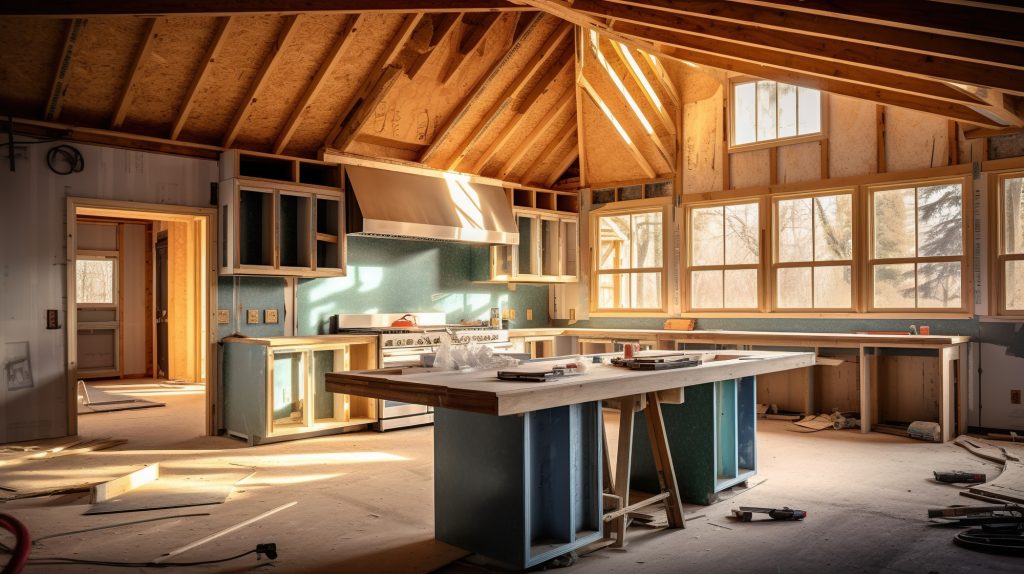Kitchens are undoubtedly the heart of most homes. It’s where families congregate, meals are prepared, and memories are made. While everyone yearns for a visually appealing space that reflects personal style and the latest trends, it’s essential to remember the importance of financial prudence.
With the rising cost of carpentry works, materials, and appliances, it’s becoming increasingly vital to balance aesthetics and affordability. The goal should always be to maximize the value derived from every dollar spent.
To achieve this equilibrium, here are seven effective strategies to design your dream kitchen without overstepping your budget.
- Prioritize Essential Functions
Every kitchen has its non-negotiables. Before diving into design choices, identify the critical functions the kitchen must perform. Does it need ample storage space? Is a larger cooking area required? By identifying these core requirements, it becomes easier to allocate the budget effectively.
It’s wise to avoid the allure of unnecessary gadgets and design features that don’t serve these primary functions. Instead, focus on investing in quality for essential items. This ensures the kitchen remains functional and durable, even if some aesthetic compromises are made.
Lastly, researching alternative products or solutions that perform the same function at a fraction of the price can be a goldmine. This might mean considering laminate countertops instead of granite or opting for open shelving instead of cabinetry.
- Seek Out Cost-Effective Materials
Numerous materials are available for every kitchen component, from countertops to flooring. While some materials, like marble, can be exorbitantly expensive, many beautiful yet affordable alternatives exist.
For instance, consider quartz as a countertop material. It offers the elegance of natural stone but often comes at a lower price point. Similarly, vinyl or laminate flooring can mimic the look of hardwood or tile but at a fraction of the cost.
Importantly, research and seek expert advice before committing to materials. Sometimes, spending more upfront can save money in the long run due to a product’s durability and longevity.
- Optimize Space And Layout
A kitchen’s layout can significantly impact its functionality and overall appeal. Before embarking on any structural changes, evaluate the current space thoroughly. Sometimes, simple tweaks can result in a more efficient design without incurring the high costs of tearing down walls or relocating plumbing.
Think about how the space is used daily. Elements like the work triangle, which focuses on the proximity between the stove, sink, and refrigerator, can streamline cooking processes. By optimizing the layout, one can avoid costly mistakes and unnecessary additions.
Lastly, consider incorporating multipurpose elements. A kitchen island, for instance, can serve as a prep area, dining table, and storage space, negating the need for multiple separate components.
- DIY Where Possible
While professional input is invaluable, there are certain aspects of a kitchen remodel where you can cut costs by doing it yourself. Painting walls, installing a backsplash, or even assembling flat-pack furniture can be accomplished with a little research and patience.
However, it’s crucial to understand your limits. For tasks that require specialized knowledge, like electrical work or plumbing, it’s wise to hire a professional. Mistakes in these areas can lead to costly future repairs.
By selectively choosing DIY projects, homeowners can personalize their space while making significant savings.
- Recycle And Upcycle
Before buying everything new, assess what can be reused or repurposed. Old cabinets might get a new lease on life with a fresh coat of paint or new hardware. An antique table can be transformed into a kitchen island with some modifications.
Not only does this approach save money, but it also adds unique character to the kitchen. Furthermore, it’s sustainable, reducing the environmental footprint of the project.
The design can also incorporate second-hand or reclaimed items from thrift stores or salvage yards. Often, these pieces have a rich history and can become conversation starters in the new kitchen.
- Invest In Timeless Features
While it’s tempting to jump on the latest design trend, it’s essential to think long-term when planning a kitchen space. Timeless designs ensure that the kitchen remains stylish and contemporary for years to come, avoiding frequent, costly updates.
Neutral color palettes, for example, provide a classic look that can be easily refreshed with new accessories or paint. Similarly, shaker-style cabinets or subway tiles have proven to withstand the test of time in terms of design appeal.
Incorporating timeless elements doesn’t mean stifling creativity. Use trendy items as accents, like a statement light fixture or unique cabinet handles, ensuring the main components remain relevant and age gracefully.
- Plan And Stick To A Budget
Perhaps the most crucial step in balancing aesthetics and affordability is having a clear budget from the outset. Start by breaking down the total budget into categories like cabinetry, appliances, labor, and contingency.
Always account for unexpected expenses. It’s not uncommon for home renovation projects, including kitchens, to uncover unforeseen issues like faulty wiring or plumbing. A contingency fund within the budget can absorb these surprise costs.
Regularly reviewing and updating the budget as the project progresses helps avoid overspending. It provides a clear picture of where funds are being allocated and highlights areas where costs might be trimmed without compromising results.
Conclusion
Crafting the ideal kitchen involves merging beauty with practicality. Whether it’s through choosing timeless designs, diligently planning a budget, or the other invaluable strategies listed above, it’s possible to design a kitchen that resonates with style without straining finances.
Remember, a truly successful kitchen project brings joy to its users, serves its purpose efficiently, and stands the test of time without breaking the bank.
Must see – UTSA Blackboard Login: App, Support And Everything You Must Know







